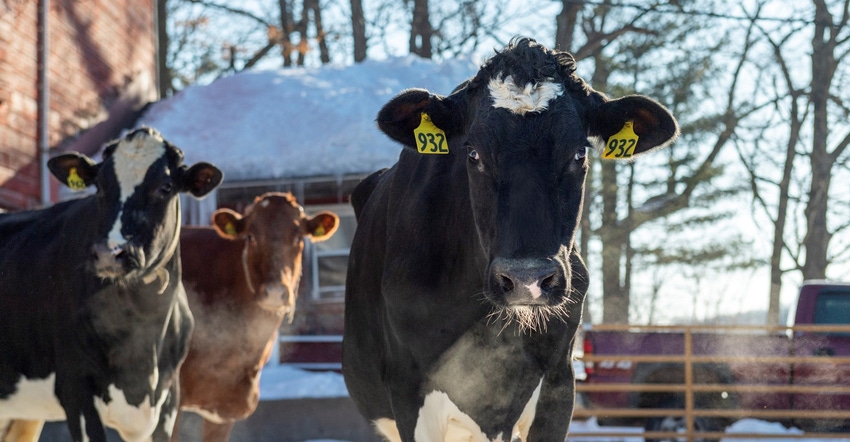January 7, 2022

Farmers work hard all year long to take care of their animals, especially during cold Wisconsin winters.
Growing up on a dairy farm, I experienced this firsthand. Through the subzero temperatures, Wisconsin dairy farmers suit up with extra layers of clothing and brave the cold to take care of their animals. Farmers take extra measures to ensure warmth, safety and comfort for the animals that are their livelihood.
Frigid temperatures
While Wisconsin faces frigid temperatures, the state’s climate is relatively ideal for dairy cows. When cows are producing milk, they naturally produce more heat, which makes them most comfortable at lower temperatures. The ideal temperature for a dairy cow is between 40 and 50 degrees F. When the temperature drops below 40 degrees, farmers make adjustments to their facilities, feed and daily routines to keep their cows happy and healthy.
The first thing you might notice during winter months on some farms are closed curtain walls on dairy barns. These curtains are opened in the spring to provide ventilation and airflow in the barn. When the cold weather sets in, farmers close these curtains to prevent cold air and moisture from entering the barn.
Another adjustment is made through feed rations, specially formulated for dairy cows to provide additional energy that will keep cows warm during the winter months. These rations are monitored throughout the winter and analyzed by a nutritionist. Automatic heated waterers in barns are also checked daily to ensure cows have access to water at all times.
Because calves are vulnerable to freezing temperatures, farmers take extra measures to keep them warm and growing throughout the winter. Farmers increase the amount of feed provided to calves each day to assure enough energy for warmth and growth. This could mean upward of three to four feedings a day during the coldest days of the winter. Farmers also provide dry, deep bedding for calves to nestle in and may even provide calves with custom jackets for extra warmth.
To combat the cold on my family’s farm, we place coats on each calf, use electric deicers in outside watering tanks to keep them from freezing, install insulation on windows, and add extra bedding straw for cows and calves.
Wisconsin’s dairy farmers work tirelessly to keep their cows comfortable, especially during the cold winter months. The next time you enjoy a delicious dairy product, make sure to thank our hardworking dairy farmers who face the frigid Wisconsin weather to care for their cows.
Nunes is the 74th Alice in Dairyland.
You May Also Like




